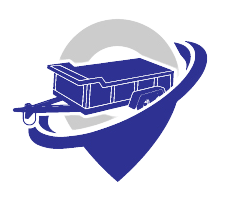In the world of trailers and trailer rentals, two essential terms often come into play: "Trailer Components" and "Trailer Items." These terms might sound similar, but they refer to distinct aspects of the trailer industry. Understanding the difference between these two concepts can help you navigate the world of trailers more effectively.
Trailer Components: Building Blocks of Trailers
"Trailer components" refer to the essential parts and elements that make up a trailer. These components are the building blocks that manufacturers and builders use to construct trailers of various types and sizes. They include:
- Chassis: The chassis is the structural framework of the trailer, forming its base and providing support for the entire unit. It includes the trailer's frame, axles, suspension system, wheels, and brakes.
- Cargo Area: The cargo area is the part of the trailer designed to carry goods, equipment, or other items. It may have different configurations depending on the trailer type, such as an enclosed cargo area, an open deck, or specialized compartments.
- Coupling Mechanism: This component allows the trailer to be attached and towed by a vehicle. Common coupling mechanisms include ball hitches, fifth-wheel hitches, and gooseneck hitches.
- Lighting and Wiring: Trailers have lighting systems, including taillights, brake lights, turn signals, and running lights. Wiring connects these lights to the towing vehicle for safe operation.
- Safety Features: Safety components may include reflectors, safety chains, emergency brakes, and breakaway systems. These features ensure the trailer operates safely on the road.
Trailer Items: Contents of the Trailer
On the other hand, "Trailer Items" refer to the contents, cargo, or belongings that are loaded or transported within a trailer. These can vary widely based on the purpose and use of the trailer. Trailer items encompass a broad range of goods, equipment, or personal belongings, including:
- Cargo: The primary purpose of many trailers is to transport cargo. This can include commercial goods, construction materials, furniture, or any items that require transportation.
- Recreational Gear: In the context of recreational trailers, trailer items often include camping gear, sports equipment, bicycles, and other items used for outdoor adventures.
- Vehicles: Some trailers are designed to transport vehicles, such as cars, motorcycles, or ATVs. These vehicles are considered trailer items when loaded onto the trailer.
- Personal Belongings: In situations like moving or long-distance travel, personal belongings such as household items, furniture, or appliances may be placed inside a trailer.
Key Differences:
Understanding the difference between trailer components and trailer items is essential for both trailer owners and users. It ensures the safe and efficient operation of trailers, whether they are used for commercial purposes, recreational activities, or moving personal belongings. By recognizing the role of each, you can make informed decisions regarding trailer maintenance, utilization, and cargo management.

